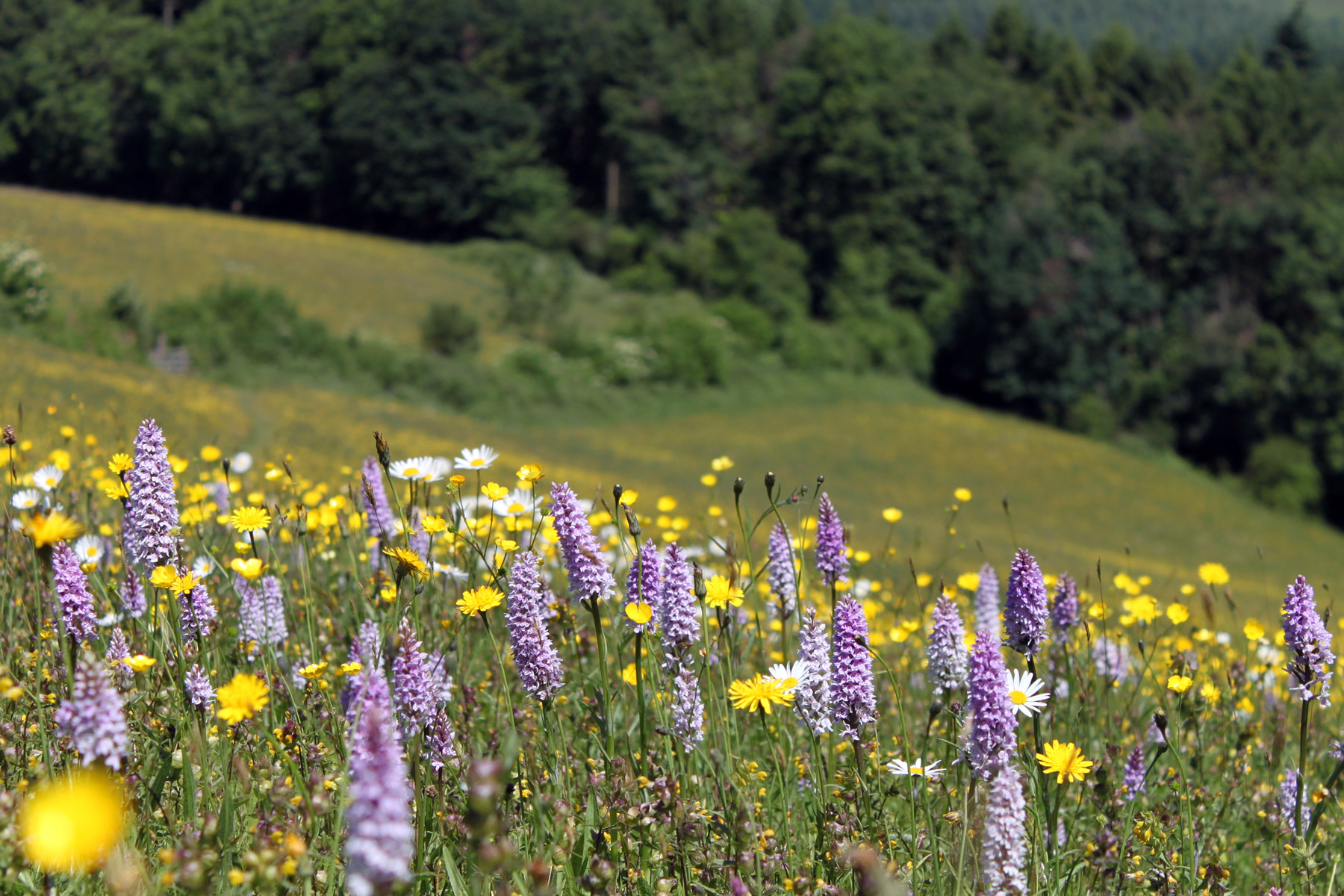The sun shone for the fourth event in our Meadows, Mosaics and Mitigating Climate Change series.
Proceedings were kicked off by Jeremy Dagley (Chair of the Wood Pasture and Parkland Network) who gave a talk entitled ‘What is Wood Pasture – its history and future value?‘ . During the talk Jeremy first introduced the terminology giving some definitions and examples of wood pasture systems before then moving on to discuss the intrinsic value of this habitat type and how it plays a vital role in tackling the combined climate and biodiversity crises we currently face.
Geoff Newman (Natural England’s National Agroforestry Lead) then followed this with a short overview of how agroforestry systems are trying to be worked into the new ELMs agri-environment schemes. This included introducing us to his PALM mnemonic (Purpose, Advice, Layout, Measure success).AF Moccas Geoff Newman
We then all headed up to Moccas Hill Wood and were shown around by Tom Simpson (Natural England Senior NNR warden). At three different stops on the walk, Tom led the discussion on the background and history of the site, detailing how it has been transformed from a larch plantation to a natural mosaic system over the past five years, and the challenges and opportunities of using livestock as a management tool. John and Jamie Hughes, the tenant farmers on the site contributed to the discussion as did Dan Carne from the Woodmeadow Trust. An innovative fenceless grazing system is being used on other NNRs which opens up the possibility of using livestock for habitat management on larger, more complex sites.


Specific points raised by attendees included questions on how best to protect young trees from grazing animals including livestock, how to control bracken growth and how to increase the diversity of grassland areas using bales of flower rich hay rolled out and fed to cattle on site in winter.
You can find Jeremy’s slides here.Herefordshire Wood-pasture workshop Jeremy Dagley
For an in depth explanation of the content of the slides please refer to a recent talk that Jeremy gave to the CIEEM, the full recording of which can be found here
Further reading that was mentioned during the talks included:
Rethinking Ancient Woodland – The archaeology and history of woods in Norfolk by Gerry Barnes and Tom Williamsonhttps://www.herts.ac.uk/uhpress/books-content/rethinking-ancient-woodland
Shadow Woods – A Search for Lost Landscapesby Ian Rotherhamhttps://www.nhbs.com/shadow-woods-book
The Agroforestry Handbook – Agroforestry for the UK by The Soil Associationhttps://www.soilassociation.org/media/19141/the-agroforestry-handbook.pdf
Carbon and Ecosystems: Restoration and Creation to Capture Carbon https://cieem.net/resource/carbon-and-ecosystems-restoration-and-creation-to-capture-carbon/
